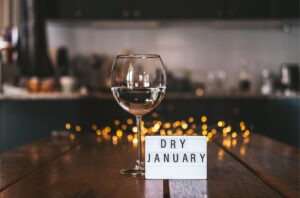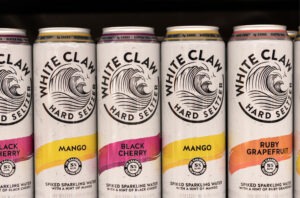The PR and Marketing Behind Viral Health Challenges
Published on April 16, 2024 at 10:23 a.m.
by Anne Smith.
At the start of every year, people all over the world set New Year’s resolutions as a challenge to better themselves. Because New Year’s resolutions are meant to be practiced over the length of one year, only 9% of Americans achieve their stated goals. The reasons for this failure may vary — life’s challenges, people’s busy schedules or just lack of effort.

However, in recent years, many people have committed to and succeeded in following through on viral health trends, such as the 75 Hard Challenge and Dry January, and have turned to social media to document their journeys. Some of those who commit to such challenges often make permanent changes in their lives after the challenges’ designated end dates.
But what are the public relations tactics that make these challenges so appealing? And how do these challenges affect certain brands and their marketing approaches?
75 Hard Challenge
The 75 Hard Challenge has gained major popularity amongst young adults who are looking to improve their overall well-being. In fact, it has been completed by over a million people around the world. In 2019, the challenge was created by Andy Frisella, an entrepreneur and CEO of the supplement company 1st Phorm. According to Forbes Health, “Frisella created 75 Hard after interviewing James Lawrence, who’s known as the Iron Cowboy for completing 50 Ironman races in 50 consecutive days across all 50 states. After Lawrence told Frisella that you must intentionally put yourself in places that are uncomfortable in order to develop mental fortitude, Frisella was inspired to create 75 Hard.”
This challenge consists of five daily rules — stick to a healthy diet, drink a gallon of water, read 10 pages of a self-improvement book, cut out all alcohol, and complete two 45-minute exercises — for 75 days. It is unique compared to other health trends as it is not only designed to improve a person’s physical health but also strengthen their mental health.
Alabama graduate and micro-influencer Mary Alison Turner decided to commit to following through on 75 Hard Challenge and documented her progress on TikTok. She posted a video every single day, showing how she incorporated this trend into her life, even while working a full-time job and maintaining a social life. Toward the end of the 75 days, Turner shared overall thoughts about the challenge and what she learned.
“Don’t do 75 Hard Challenge for the weight loss,” she advised. “That’s not the point of it … there are a lot faster ways to lose weight. This challenge is focused on your mentality.”
Different influences contribute to the 75 Hard Challenge’s popularity and success rate — whether it be by a celebrity, a friend or even a random user on social media. When people turn to social media to document their progress and post updates, it creates a system of accountability for the person attempting to complete the challenge, which increases their chance of success.
“Your life is not going to go on pause for 75 days,” Turner explained. “There’s always going to be a party; there’s always going to be some trip. The hardest part about it is making these drastic changes in your everyday lifestyle. You just have to prioritize different aspects of your life.”

Dry January
Another viral challenge that many devote themselves to is the Dry January trend. Unlike the 75 Hard Challenge, Dry January only has one rule, like it mentions in its title — no beer, wine, spirits or any other form of alcohol for the entire month. Many are enticed to participate in this challenge for a number of reasons, such as wanting to cut back on their alcohol intake, experimenting with sobriety or just wanting a break from alcohol.
Cutting out alcohol even for a month has shown major benefits to one’s health. For example, as noted in a Harvard Health Publishing article, “regular drinkers who abstained from alcohol for 30 days slept better, had more energy, and lost weight, according to a study in BMJ Open. They also lowered their blood pressure and cholesterol levels and reduced cancer-related proteins in their blood.”
Marc Edwards, a director and head of business performance at Brand Genetics, gave some insight on those who chose to participate in this challenge.
“Dry January is effectively a large deprivation exercise for many people, so when we speak with people who take part, the impact that it has on them and their lives often depends upon the amount the individual drank initially,” he said. “The social needs of the individual haven’t changed, only the available means to satisfy them.”
Dry January is not only an opportunity for people to better their health, but it also allows brands to use the trend as a marketing strategy and creates opportunities for alcohol brands to expand their market into nonalcoholic beverages. Edwards explained that “over 90% of pubs offer a range of non-alcoholic substitute drinks and that number has almost doubled since Dry January started growing in popularity at the end of last decade.” In fact, as noted by NBC News, “Nielsen IQ data show sales of nonalcoholic beers, wine and spirits sold in stores and supermarkets … climbed 31% over the past year. Within the segment, nonalcoholic spirits are experiencing explosive growth at 94%. For the first time, annual sales have surpassed $500 million.”

“I think [Dry January] is more likely to impact a brand’s tactics rather than strategies,” stated Edwards. “It can feed and support a strategy, but it is not THE strategy. The bigger movement is this drive towards moderation – however that is interpreted – and that is more likely to influence strategy.”
White Claw, the popular alcoholic seltzer brand, is one prominent example of a company that used the viral health trend as a marketing opportunity. After the company conducted multiple surveys, it found that 80% of millennials were interested in experimenting with sobriety and that 63% of consumers felt pressure to drink in social settings. On Dec. 5, 2023, White Claw introduced its new line of nonalcoholic seltzers, which became available for purchase on Jan. 1, 2024, just in time to kick-off the start of Dry January.
When analyzing the driving forces behind viral trends such as 75 Hard and Dry January, it is important to not only recognize the influences that drive individuals to take on these challenges, but also the effect that these trends have on many brands and their marketing approaches.
Would you consider taking on one of these trendy challenges?




